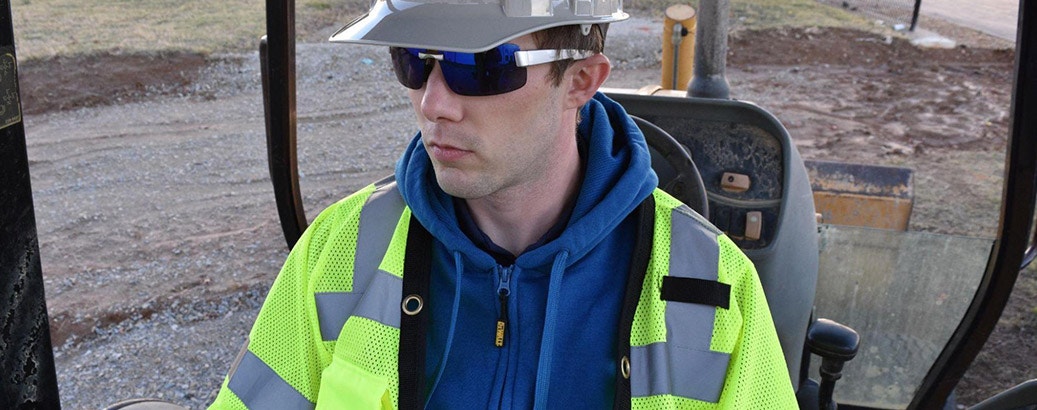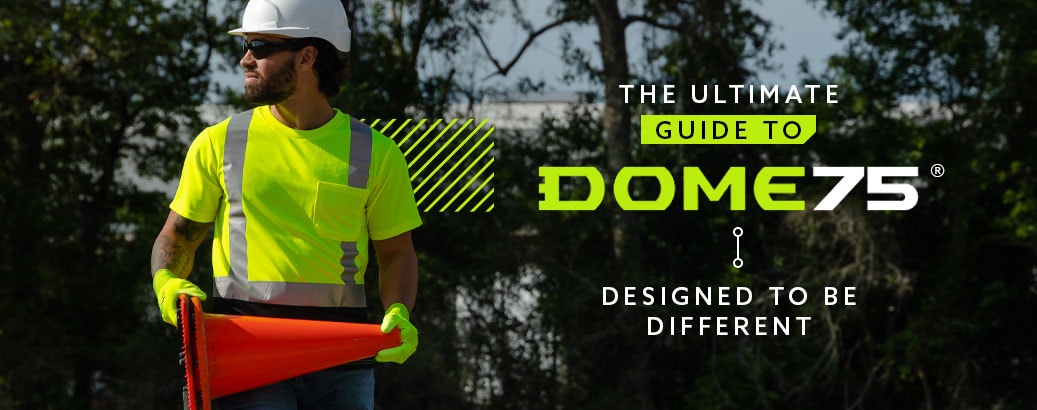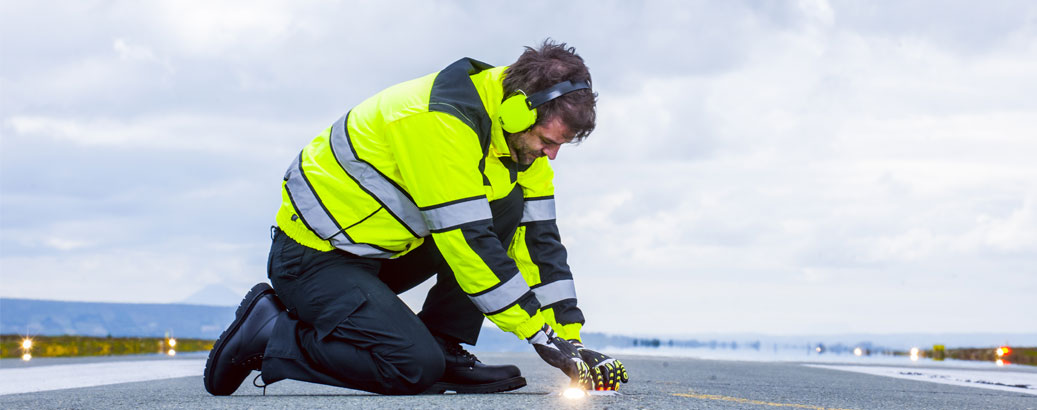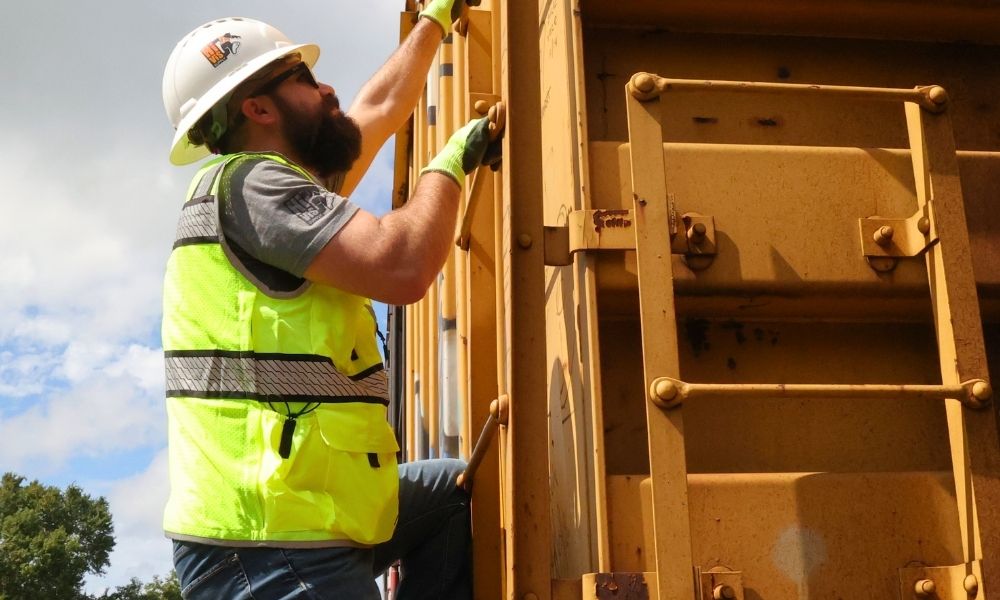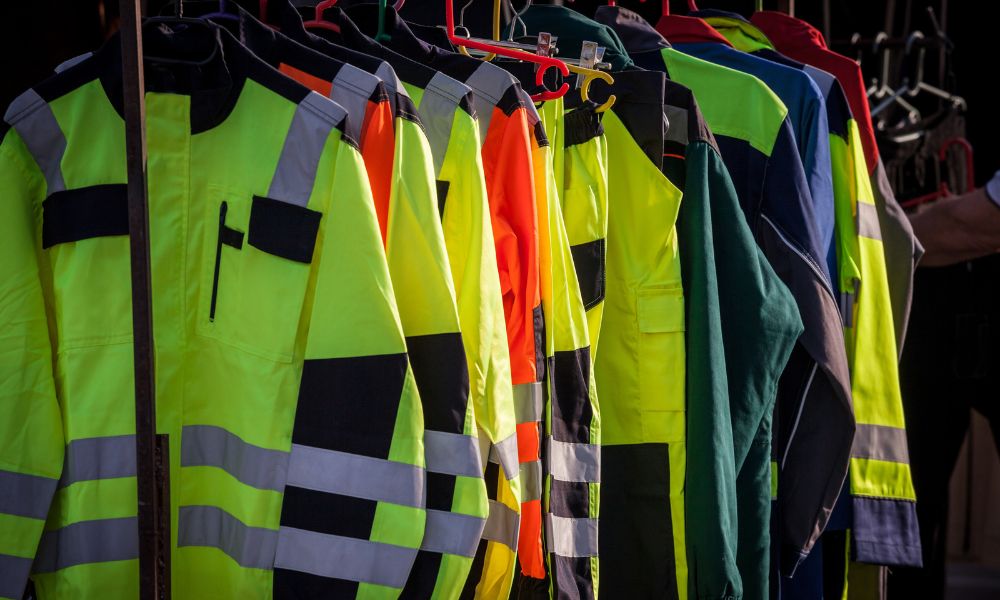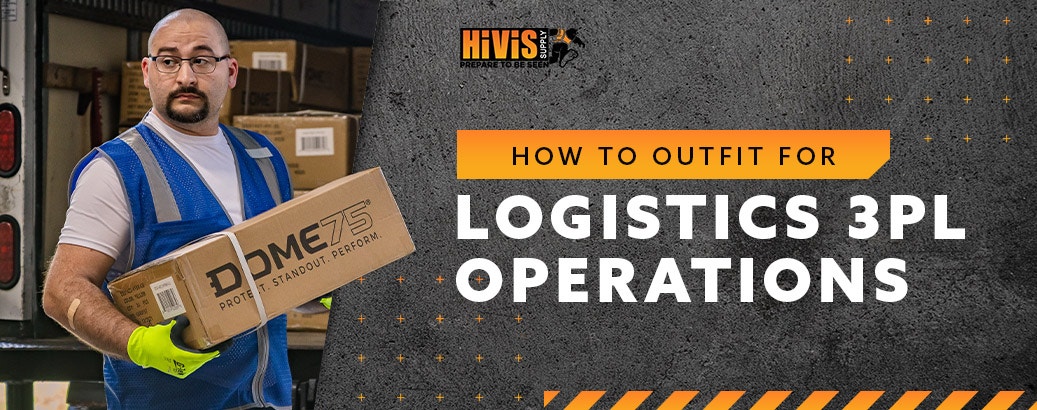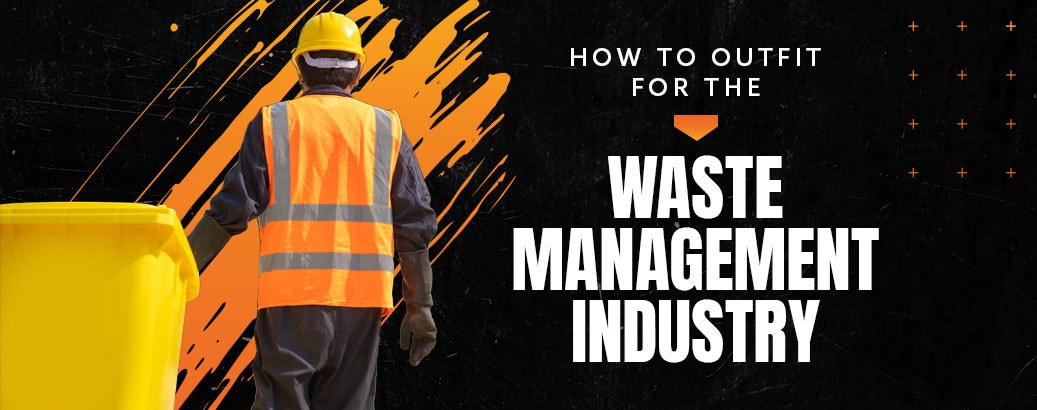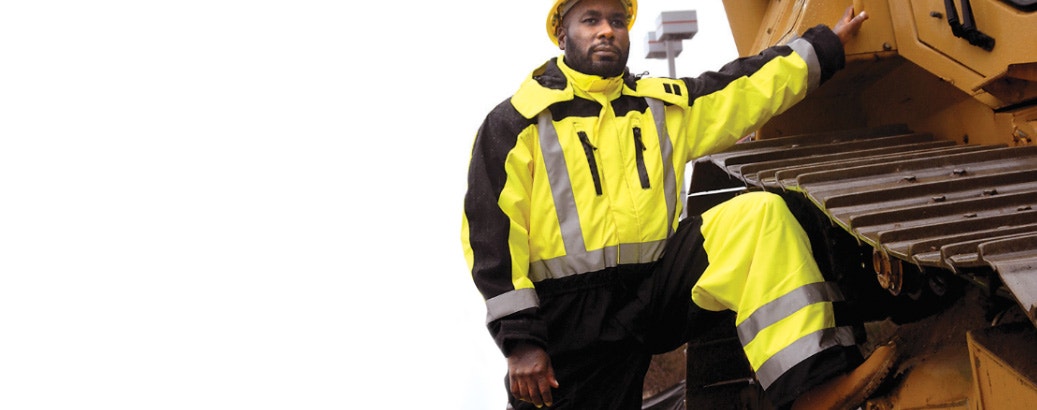HiVis 101: What Is Moisture-Wicking Material?
- By HiVis Supply
- May 11, 2022
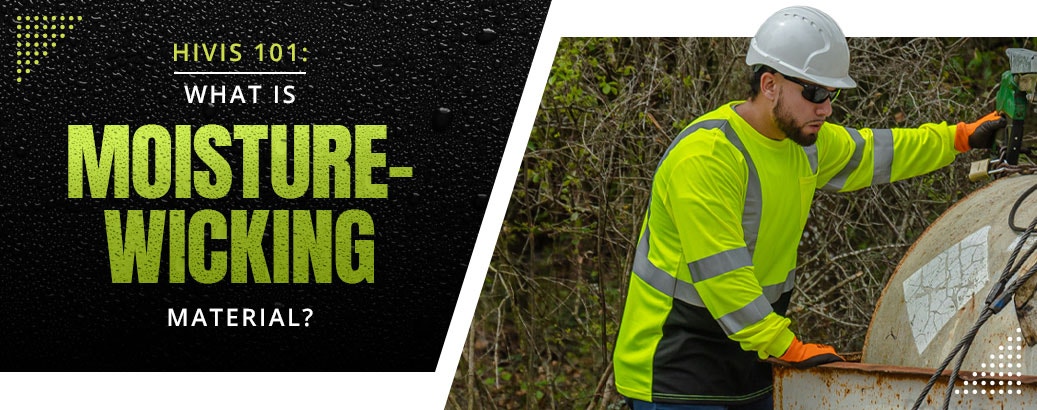
Many people think of moisture-wicking fabric as something for workout clothes. While you’ll definitely find lots of people sporting moisture-wicking gear at the gym or on the athletic field, this awesome fabric technology is good for a lot more things than just fitness. It’s also a must-have for anyone who’s getting the ultimate workout: a hard day’s work in an industry like construction, landscaping, waste management or other essential occupations.
Pretty much anyone who’s out sweating in the sun for extended periods should be rocking moisture-wicking clothing — but what’s so good about it, anyway? In this article, we’ll look at the surprisingly interesting scientific principles behind moisture wicking, as well as how they can help you better understand your choice of workwear. In addition, we’ll look at seven of DOME75 new selections for moisture wicking hi vis shirts!
The Basics of Capillary Action
A process called capillary action is the secret to understanding how moisture-wicking fabric works. In fact, if you’ve ever soaked a paper towel or put a plant in a vase of water, you’ve seen capillary action working its magic!
Two molecular forces are behind capillary action: cohesive and adhesive force. Capillary action happens when adhesive forces draw water up through a tube or hole made of hydrophilic (water-attracting) material. Thanks to the cohesive forces that draw water molecules together, these molecules grab their other friends and tell them to join the party as they make their way through the hydrophilic tubes.
As we mentioned, this phenomenon allows water to travel from a plant’s roots to its leaves, and it’s why water spreads so quickly through a paper towel. It’s also how wax from a candle enters the wick — hence the term “wicking!” Of course, we’re not here to talk about candles, plants or paper towels, so let’s look at the practical applications when it comes to workwear fabrics.

How Moisture-Wicking Fabrics Work
All moisture-wicking fabric works via capillary action. Here’s the deal:
- Moisture-wicking fabric is usually made of multiple synthetic layers, with polyester being the most common choice. These fabrics use a combination of hydrophilic and hydrophobic materials to create a system that’s constantly drawing moisture away from the skin and onto the surface for evaporation. The layer closest to the skin is usually made of a porous, hydrophilic polyester mesh.
- Through capillary action, water on your skin gets pulled through the mesh and up to the surface, where it comes to rest on the hydrophobic outer layer. Unlike the inner layer, the outer layer is much less porous and designed to distribute sweat over a larger area so that it evaporates more quickly.
- The liquid evaporates when it reaches the fabric’s surface, which causes more liquid to be drawn up through the capillaries to evaporate. It’s the same basic idea in a plant, which evaporates water through its leaves, and a candle, which evaporates wax through its flame. (Yes, we said we weren’t here to talk about these things, but they’re still helpful examples!)
- Once it’s on the hydrophobic layer, the water has a hard time getting back in. Together, the evaporation, plus the sweat’s distribution over a wider area, plus the hydrophobic outer fabric all ensure that sweat stays on a one-way journey away from your skin! Good riddance, we say.
Thus, while adhesion and cohesion start the process of moisture wicking, evaporation is ultimately what does the work. Evaporation provides the “engine” that lets fabrics continually draw up and release moisture. Moisture-wicking fabric doesn’t just encourage evaporation — it puts the process in overdrive to keep you cool and comfortable!

Why Is Moisture Wicking an Important Feature?
On a warm weather job site, wearing clothing that doesn’t breathe is a big mistake. If your clothing materials aren’t actively managing sweat, you could be opening yourself up to all kinds of consequences, ranging from annoying to potentially dangerous:
- Chafing: Sweat on the skin, combined with repetitive motion, can cause the painful skin irritation known as chafing. If you’ve ever suffered through a work day with chafed skin, you know why this is bad news.
- Oil and Bacteria: When your sweat stays on your skin all day, it creates a nasty combo of moisture, oils, dirt and bacteria that can block your pores and even potentially lead to bacterial skin infections.
- Body Temperature: The whole purpose of sweat is to cool your body when it evaporates. That’s why breathable clothes are so crucial: If your sweat isn’t evaporating, your body is missing one of its most important tools for temperature regulation. That can potentially put you at risk for serious health hazards like heat exhaustion and heatstroke. In cold weather, sweat on your skin can create the opposite problem since your body will lose warmth to the unevaporated sweat.
Cotton, the all-purpose fabric that many people wear every day, is one of the worst fabrics for moisture management. During a sweaty work day, cotton’s thick and absorbent fibers take forever to dry and give sweat no place to go. Consequently, you’re putting yourself at risk for all of the problems above by wearing cotton on the job.
Instead, deal with moisture management problems before they start by choosing the right moisture-wicking workwear. By controlling and removing sweat, a moisture-wicking base layer can help any worker have a cooler, comfier, more productive day.
How to Wear a Moisture-Wicking Shirt
Moisture wicking shirts are the most common moisture-wicking garment on most job sites. In warm weather, most workers will wear a moisture-wicking work shirt on its own, along with any other required hi vis safety gear for the job site. Many different types of shirts are available with moisture-wicking fabric, from t-shirts to polos to long-sleeve shirts, so it’s easy to find one that suits your style.
In cooler temperatures, many workers choose to wear a wicking t-shirt as a base layer. This is a great way to make sure your winter workwear outfit gets the most important benefits of moisture wicking, such as maintaining warmth by keeping sweat away from the skin. Long-sleeve t-shirts are popular as winter base layers since they offer extra warmth and moisture protection at the same time!

Other Recommended Features in Summer Work Gear
Moisture wicking is important, but it’s not the only important feature to look for in base layers and other summer work gear. Keep an eye out for some other key features that can make a big difference in your summer workwear’s performance:
- Breathability: A breathable fabric, such as the polyester mesh that many summer work shirts are made from, improves the air circulation around your body as you work. That helps keep you at a comfortable temperature and encourages sweat to evaporate more quickly.
- Flexibility: Stiff, rigid clothes can be especially uncomfortable when you’re already hot. Instead, choose work clothes made from flexible athletic fabrics, potentially with built-in flex points that give your body a more complete range of motion.
- Heat-Applied Reflective Tape: Traditional sewn-on reflective tape can be uncomfortable when it rubs against your skin. That’s why the best hi vis work shirts use heat-applied tape that minimizes friction while you’re working.
- ANSI Compliance: Much as you would with any type of hi vis clothing, make sure that your hi vis summer workwear meets any ANSI 107 requirements on your job site.
- Anti-Microbial Finish: Tired of work clothes that smell like a barnyard by lunchtime? Many base layers now offer an anti-microbial finish that helps prevent odor-causing bacteria from growing in your workwear!
Seven New Moisture-Wicking Options from DOME75
DOME75 has a high quality lineup of moisture-wicking workwear products that are designed with state-of-the-art moisture-wicking shirts as an affordable and reliable way to stay dry and comfy all summer long. Get started on your search for the best moisture-wicking workwear with these seven outstanding choices:

Looking for an economical enhanced visibility t-shirt with moisture control features? That’s exactly what we offer with this non-ANSI hi vis work shirt and its moisture-wicking birdseye mesh construction.

Get the ANSI Class 2 protection you need in a comfy moisture-wicking t-shirt. Heat-applied 2" no-rub reflective tape creates a working experience that’s both comfortable and visible, and the wicking polyester mesh provides exceptional airflow.

Our customers love black bottom hi vis designs because these models offer ANSI-rated performance with a sharp black accent that also hides dirt. For a perfect example, see this ANSI Class 2 moisture-wicking safety shirt!

DOME75’s ANSI Class 3 short sleeve t-shirt is the perfect balance of safety and quality, with brilliant hi vis colors, heat-applied reflector tape and a high performance moisture-wicking polyester fabric.

Our safety professionals designed this economical long sleeve work shirt for excellent comfort and great visibility. Plus, thanks to its built-in moisture-wicking and long sleeves, it makes an ideal base layer for cooler weather outfits.

Here’s another DOME75 model that we created for hard-working people who need affordable hi vis moisture wicking. With multiple stripes of heat-applied reflective tape and a moisture-wicking fabric, this shirt is ready to be your new go-to for comfort and performance.

Another great choice for all-season moisture protection, this ANSI Class 3 long sleeve is made from a durable wicking mesh and is ready for your toughest work days! Its color-blocked black trim provides a high contrast look for outstanding visibility and a clean appearance.
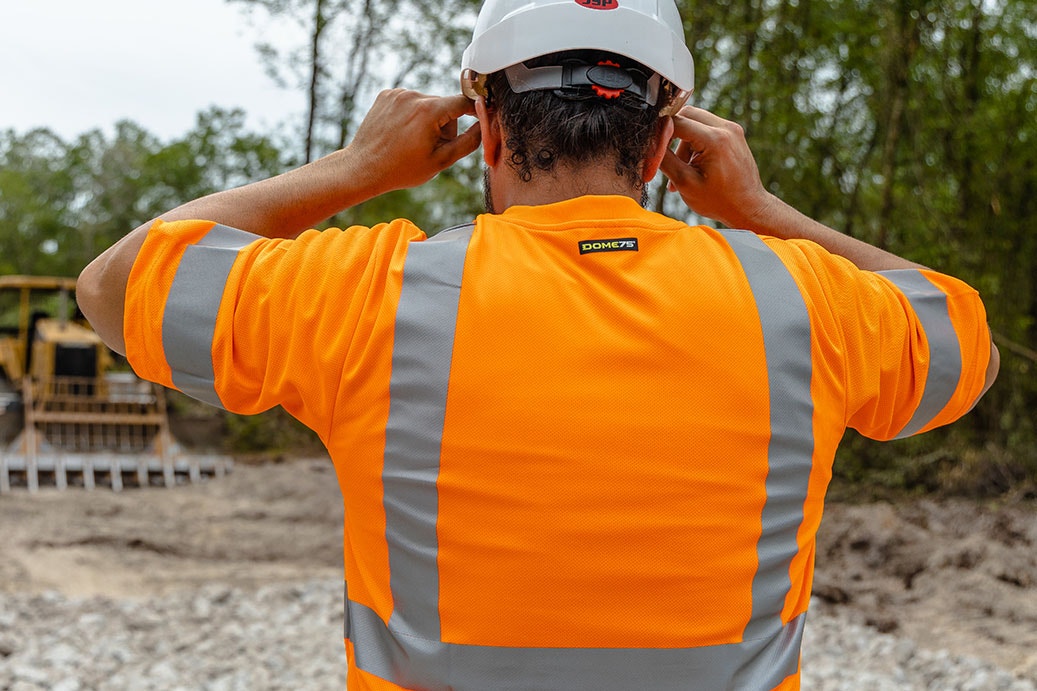
Looking for the hot weather workwear you need for a productive summer? HiVis Supply has it all in one place, from moisture-wicking shirts to cooling products and more. Shop our summer workwear selection now or read our top tips for increasing safety in hot weather workplaces!


